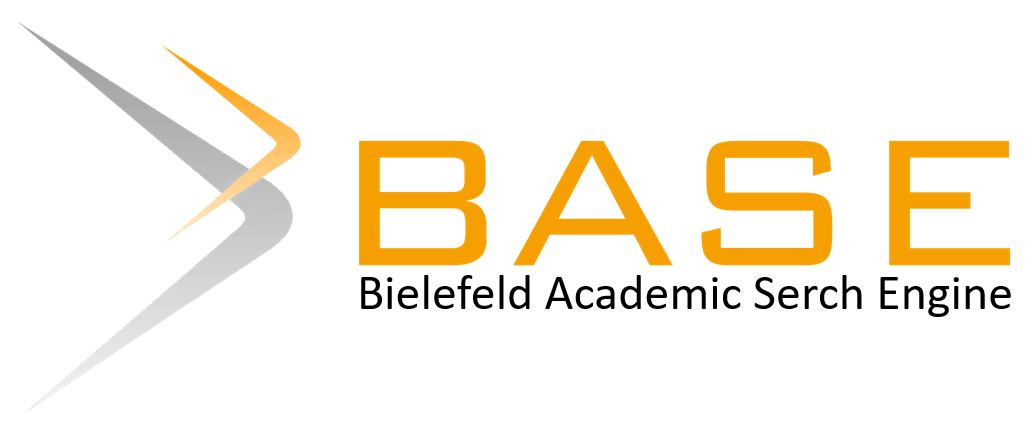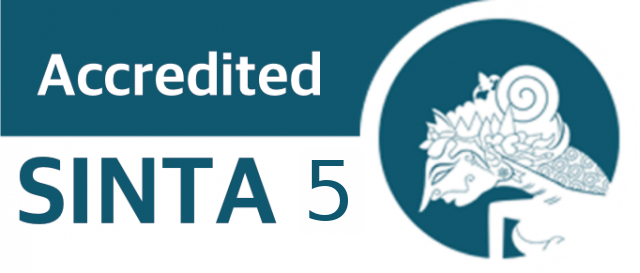Analisis <i>In Silico</i> Senyawa Aktif Batang Kayu Bajakah (<i>Spatholobus littoralis</i> Hassk) Sebagai Terapi Psoriasis
DOI:
https://doi.org/10.30595/hmj.v5i2.12744Keywords:
In Silico, Psoriasis, Spatholobus littoralis HasskAbstract
Background :Â Innovative topical psoriasis therapy continues to be developed, Spatholobus littoralis Hassk or Bajakah has antipsoriatic activity so can be used as a topical herbal medicine in reducing the severity of psoriasis. In silico is a computational experiment which is analogous to biological experiments in vivo and in vitro. Objective : To evaluate content of Spatholobus littoralis Hassk using in silico analysis in the treatment of psoriasis. Methods :Â The active compound Spatholobus littoralis Hassk extracted from the knapsack database. The simplified molecular input line entry system (SMILE) format was taken from the pubchem database. Prediction in antioxidants, antiinflammatory, antipruritic and immunosuppressive was done using a pass server. The molecular mechanism of active compounds in human body was taken from search tool for interacting chemicals (STITCH) which was predicted experimentally, then analyzed computationally. Further pathway analysis using cytoscape software. Results : There are 14 active compounds in Spatholobus littoralis Hassk have potential as antioxidants, anti-inflammatory, antipruritic and immunosuppressive are predicted to have ability test computationally tested activity but laboratory tests have not been proven or have little potential. The highest bioactivity potential of Spatholobus littoralis Hassk is antioxidants where the most important role is dihydrokaemferol with an average probable to be active (Pa) value of 0.691, the compound has ability to computationally test but in laboratory tests it has not been proven or has a small potential. Conclusions : Spatholobus littoralis Hassk is a good choice for the treatment of psoriasis.
Â
Â
Latar belakang : Terapi psoriasis topikal inovatif terus dikembangkangkan, Spatholobus littoralis Hassk atau bajakah memiliki aktivitas antipsoriatik sehingga dapat digunakan sebagai obat herbal topikal dalam mengurangi keparahan psoriasis. In silico merupakan percobaan komputasi yang analog dengan percobaan biologis secara in vivo dan in vitro. Tujuan : Untuk mengevaluasi kandungan Spatholobus littoralis Hassk menggunakan analisis in silico pada pengobatan psoriasis. Metode : Senyawa aktif Spatholobus littoralis Hassk yang diekstraksi dari database knapsack. Format simplified molecular input line entry system (SMILE) diambil dari basis data pubchem. Prediksi dalam antioksidan, antiinflamasi, antipruritus dan immunosupresor dilakukan menggunakan pass server. Mekanisme molekuler senyawa aktif dalam tubuh manusia diambil dari search tool for interacting chemicals (STITCH) yang diprediksi secara eksperimental, kemudian dianalisis secara komputasional. Analisis pathway lebih lanjut menggunakan perangkat lunak cytoscape. Hasil : Terdapat 14 senyawa aktif pada Spatholobus littoralis Hassk yang memilik potensi sebagai antioksidan, antiinflamasi, antipruritus dan immunosupresor diprediksi memiliki kemampuan pada aktivitas yang diuji secara komputasional, namun secara uji laboratorium belum terbukti atau memiliki potensi kecil. Potensi bioaktivitas Spatholobus littoralis Hassk tertinggi adalah antioksidan dimana yang paling berperan adalah dihydrokaemferol dengan ata-rata nilai probable to be active (Pa) 0,691 dimana senyawa tersebut secara komputasional memiliki kemampuan pada aktivitas yang diuji namun secara uji laboratorium belum terbukti atau memiliki potensi kecil. Kesimpulan : Spatholobus littoralis Hassk merupakan pilihan yang baik untuk terapi psoriasis karena memiliki efek antioksidan, antiinflamasi, antipruritus dan immunosupresor serta menguntungkan dari segi ketersediaan serta keamanan.
References
- Wollina U, Franca F, Lotti T, Tirant M. Adjuvant treatment of chronic plaque psoriasis in adults by a herbal combination: Open German trial and review of the literature. Dermatol Ther. 2020; 33(4): 1-5.
- Wolf R, Orion E, Ruocco E, Ruocco V. Abnormal epidermal barrier in the pathogenesis of psoriasis. Clin Dermatol. 2011; 30: 323–8.
- Gudjonsson J dan Elder J. Psoriasis. Dalam: Kang S, Amagai M, Bruckner AL, Enk AH, Margolis DJ, Mc Michael Aj, dkk, penyunting. Fitzpatrick’s Dermatology in General medicine. Edisi ke-9. New York: McGraw-Hill. 2019. h.197-242.
- Kerkhof P dan Nestle F. Psoriasis. Dalam: Jean L, Joseph L, Julie V, penyunting. Bolognia Dermatology. Edisi ke-3. New York: Elsevier; 2012. h.35-56.
- Rapallia V, Singhvia G, Dubeya S, Guptab G, Chellappanc G, Dua K. Emerging landscape in psoriasis management: From topical application to targeting biomolecules. J Biopha. 2018; 6(36): 707-13.
- Griffiths C, Wal J, Ashcroft D, Flohr C, Naldi L, Nijsten T dkk. The global state of psoriasis disease epidemiology: a workshop report. Br J Dermatol. 2017; 177(1): 4-7.
- Damayanti dan Pratiwi K. Profil Psoriasis Vulgaris di RSUD Dr. Soetomo Surabaya: Studi Retropektif. BIKK. 2018; 30(3): 1-7.
- Febriani D dan Mulianto N. Profil Pasien Psoriasis Di Poliklinik Kulit Dan Kelamin RSUD DR. Moewardi Surakarta Periode Januari 2017-Desember 2019. 2019; 1-11. (Unpublish)
- Bhutani T, Wong B, Bebo W, Armstron. Access to health care in patients with Psoriasis and psoriatic arthritis: data from national psoriasis foundation survey panel. JAMA Dermatol. 2013; 149 (6): 717-21.
- Kivelevitch D, Hebeler K, Patel M, Menter A, Emerging topical treatments for psoriasis, Expert Opin. Emerg Drugs. 2013; 18(4): 523-32.
- Gautam S, Sunil K, Shalini P, Vishal G. Nanocarriers for topical drug delivery: approaches and advancements. Nanotechnol Asia. 2018; 8: 1-10.
- Saputera M, Marpaung T, Ayuchecaria N. Konsentrasi hambat minimum (KHM) kadar ekstrak etanol batang bajakah tampala (Spatholobus Littoralis Hassk) terhadap bakteri Escherichia coli melalui metode sumuran. Jurnal Ilmiah Manuntung. 2019; 5(2): 167-73.
- Weigle N dan McBane S. Psoriasis. Am Fam Physician. 2013; 87(9): 626-33.
- Saputera M dan Ayuchecaria N. Uji efektifitas ekstrak etanolik batang bajakah tampala (Spatholobus littoralis Hassk) terhadap waktu penyembuhan luka. JIIS. 2018; 3(2): 318-27.
- Kim WB, Jerome D, Yeung J. Diagnosis and management of psoriasis. Can Fam Physician. 2017; 63: 1-8.
- Noori H dan Spanagel R. In silico pharmacology: drug design and discovery’s gate to the future. In Silico Pharm. 2013; 1(1): 1-2.
- Jusril N, Najihah A, Juhari M, Bakar S, Mazlina W, Adenan M. Combining In Silico and In Vitro Studies to Evaluate the Acetylcholinesterase Inhibitory Profile of Different Accessions and the Biomarker Triterpenes of Centella asiatica. Molecules. 2020; 25(13): 1-14.
- Ekins S, Mestres J, Testa B. In silico pharmacology for drug discovery: methods for virtual ligand screening and profiling. Br J Pharmacol. 2007; 152: 9-20.
- Legiawati L, Fadilah F, Bramono K, Indriatmi W. In silico Study of Centella Asiatica Active Compounds as Anti Inflammatory Agent by Decreasing Il-1 And Il-6 Activity, Promoting Il-4 Activity. J Pharm Sci Res. 2018; 10(9): 1-6.
- Mardiana, Utomo D, Ramadhani A, Irawanto M. Senyawa Aktif Cyperous rotundus untuk terapi psoriasis dengan analisis in silico. 2019; 1-19. (Unpublish)
- Numan R. Spatholobus (Leguminosae-Papilionoideae): A new species and some taxonomic notes. Blumea. 1992; 37(1): 63-71.
- Ninkaew S dan Chantaranothai P. The Genus Spatholobus Hassk. (Leguminosae-Papilionoideae) in Thailand. Tropical Natural History. 2014; 14(2): 87-99.
- Yildirim M, Inaloz H, Baysal V, Delibas N. The role of oxidants and antioxidants in psoriasis. JEADV. 2003; 17: 34-6.
- Yu S, Li Y, Zhou Y, Follansbee T, Hwang S. Immune mediators and therapies for pruritus in atopic dermatitis and psoriasis. J Cutan Immunol Allergy. 2019; 2(4): 1-14.
- Seo YJ, Jeong M, Lee KT, Jang DS, Choi JH. Isocyperol, isolated from the rhizomes of Cyperus rotundus, inhibits LPS-induced inflammatory responses via suppression of the NF- κB and STAT3 pathways and ROS stress in LPS-stimulated RAW 264.7 cells. Int Immunopharmacol. 2016; 38 :61–69.
- Flatz L dan Conrad C. Role of T-cell-mediated inflammation in psoriasis: pathogenesis and targeted therapy. Psoriasis. 2013; 3: 1–10.
- Monteleone G, Pallone F, MacDonald TT, Chimenti S, Costanzo A. Psoriasis: from pathogenesis to novel therapeutic approaches. Clin Sci. 2011; 120(1): 1-11.
- Hueber AJ dan Innes IB. Immune regulation in psoriasis and psoriatic arthritis recent developments. Immunol Lett. 2007; 114(2): 59-65.
- Tanaka T, Narazaki M, Kishimoto T. IL-6 in inflammation, immunity, and disease. Cold Spring Harb Perspect Biol. 2014; 6(10): 1-16.
- Filimonov DA, Lagunin AA, Gloriozova TA, Rudik AV,Druzhilovskii DS, Pogodin PV, dkk. Prediction of the biological activity spectra of organic compounds using the pass online web resource. Chem Heterocycl Com. 2014; 50(3): 444-57.
- Farahnik B, Sharma D, Alban J, Sivamani R. Topical Botanical Agents for the Treatment of Psoriasis: A Systematic Review. M J Clin Dermatol. 2017; 18(4): 451-68.
- Luger T, Seite S, Humbert P, Krutmann J, Triller R, Dreno B. Recommendations for adjunctive basic skin care in patients with psoriasis. Dermatol. 2014; 24(2): 194-200.
- Huang TH, Lin CF, Alalaiwe A, Yang SC, Fang JY. Apoptotic or Antiproliferative Activity of Natural Products against Keratinocytes for the Treatment of Psoriasis. Int J Mol Sci. 2019; 20(10): 1-24.
- Icen M, Crowson CS, Evoy MT, Dann FJ, Gabriel SE, Maradit Kremers H. Trends in incidence of adult onset psoriasis over three decades: A population based study. J Am Acad Dermatol. 2009; 6: 394-401.
- Setty AR, Curhan G, Choi HK. Obesity, waist circumference, weight change, and the risk of psoriasis in women: Nurses' Health Study II. Arch Intern Med. 2007; 167: 1670-5.
- Menter A, Korman NJ, Elmets CA, Feldman SR, Gelfand JM, Gordon KB,dkk. Guidelines of care for the management of psoriasis and psoriatic arthritis. J Am Acad Dermatol. 2011; 65(7): 137-74.
- Bhutani T, Lioa W, Nakamura M. Evidence Based Psoriasis Diagnosis and Treatment. Dalam: Jones JB, Goh CL, Maibach HI, penyunting. Springer. Switzerland: Springer Nature. 2018; h. 1-16.
- Rajguru JP, Maya D, Kumar D, Suri P, Bhardwaj S, Patel ND. Update On Psoriasis: A review. J Family Med Prim care. 2020; 9: 20-4.
- Ramesh R, Kumar SV, Deepthi E. Update and management of psoriasis: A perspective. J Pharm Research. 2011; 4(6): 1867-71.
- Yusnita E, Sumadiwangsa S, Setyawan D, Dahlian E. Pengaruh Kadar Stimulan Terhadap Produktivitas Getah Pohon Pinus (Pinus merkussi Jungh. Et de Vriese) Pada Berbagai Tingkat Umur Di Daerah Sumedang, Jawa Barat. Bul Pen Has Hut. 2001; 19(3): 165-74.
Downloads
Additional Files
Published
Issue
Section
License
For submission of manuscripts to the Herb-Medicine Journal, the authors must certify that:
I have been authorized by my co-author to submit the manuscript to the Herb-Medicine Journal
I hereby declare, on behalf of myself and my co-authors, that:
The submitted manuscript is original work and has not been published in another peer-reviewed journal or is being considered for publication by another journal. Also, the manuscript does not infringe any existing copyright or other third party rights.
The manuscript does not contain material that may violate the law, slander, or SARA, in any way, violates the terms and conditions contained in the agreement
I/we have taken care that the scientific knowledge and all other statements contained in the manuscript are in accordance with authentic facts and formulas and will not, if followed appropriately, harm the user
No liability shall be assumed by Herb-Medicine Journal, its staff or members of the editorial board for any injury and/or damage to persons or property as a matter of product liability, negligence or otherwise, or from the use or operation of any method, product instructions, advertising , or ideas contained in publications by the Herb-Medicine Journal
Authors who publish in the Herb-Medicine Journal certify that all authors have read and agree to the contents of the Cover Letter or the Terms and Conditions. Plagiarism is strictly prohibited, and by submitting a manuscript for publication, the author agrees that the publisher has the legal right to take appropriate action against the author, if plagiarism or false information is found. Once submitted to the Herb-Medicine Journal, authors will not withdraw their manuscript at any stage prior to publication.
The author owns the copyright and grants the journal rights for first publication with the work simultaneously licensed under a Creative Commons Attribution License which allows others to share the work with acknowledgment of the work's authorship and initial publication in this journal.
Authors may enter into separate additional contractual agreements for the non-exclusive distribution of the published journal version of the work (for example, posting it to an institutional repository or publishing it in a book), with acknowledgment of its initial publication in this journal.
Authors are permitted and encouraged to post their work online (for example, in institutional repositories or on their websites) prior to and during the submission process, as this can lead to productive exchanges, as well as earlier and larger citation of published work (See The Effects of Open Access).
Untuk pengiriman naskah ke Herb-Medicine Journal, penulis harus menyatakan bahwa:
- Saya telah diberikan otorisasi oleh rekan penulis saya untuk memasukkan naskah ke Herb-Medicine Journal
- Saya dengan ini menyatakan, atas nama saya dan rekan penulis saya, bahwa:
- Naskah yang dikirimkan adalah karya asli dan belum pernah diterbitkan dalam jurnal peer-review lain atau sedang dipertimbangkan untuk diterbitkan oleh jurnal lain. Serta, naskah tidak melanggar hak cipta yang ada atau hak pihak ketiga lainnya.
- Naskah tidak mengandung materi yang mungkin melanggar hukum, memfitnah, atau SARA, dengan cara apa pun, melanggar syarat dan ketentuan yang tercantum dalam perjanjian
- Saya / kami telah berhati-hati bahwa pengetahuan ilmiah dan semua pernyataan lain yang terkandung dalam naskah sesuai dengan fakta dan formula otentik dan tidak akan, jika diikuti dengan tepat, merugikan pengguna
- Tidak ada tanggung jawab yang ditanggung oleh Herb-Medicine Journal, stafnya atau anggota dewan editorial untuk setiap cedera dan/atau kerusakan pada orang atau properti sebagai masalah pertanggungjawaban produk, kelalaian atau sebaliknya, atau dari penggunaan atau pengoperasian metode, produk apa pun instruksi, iklan, atau ide yang terkandung dalam publikasi oleh Herb-Medicine Journal
Penulis yang menerbitkan dalam Herb-Medicine Journal menyatakan bahwa semua penulis telah membaca dan menyetujui isi Surat Pengantar atau Syarat dan Ketentuan. Plagiarisme dilarang keras, dan dengan menyerahkan naskah untuk publikasi, penulis setuju bahwa penerbit memiliki hak hukum untuk mengambil tindakan yang pantas terhadap penulis, jika ditemukan plagiarisme atau informasi palsu. Setelah diserahkan ke Herb-Medicine Journal, penulis tidak akan menarik naskah mereka pada tahap apa pun sebelum dipublikasikan.
Penulis memiliki hak cipta dan memberikan hak jurnal untuk publikasi pertama dengan karya yang secara simultan dilisensikan di bawah Lisensi Creative Commons Attribution yang memungkinkan orang lain untuk berbagi karya dengan pengakuan kepengarangan karya dan publikasi awal dalam jurnal ini.
Penulis dapat membuat perjanjian kontrak tambahan yang terpisah untuk distribusi non-eksklusif versi jurnal yang diterbitkan dari karya tersebut (misalnya, mempostingnya ke repositori institusional atau menerbitkannya dalam sebuah buku), dengan pengakuan atas publikasi awalnya di jurnal ini.
Penulis diizinkan dan didorong untuk memposting pekerjaan mereka secara online (misalnya, dalam repositori institusional atau di situs web mereka) sebelum dan selama proses pengajuan, karena dapat menyebabkan pertukaran yang produktif, serta kutipan yang lebih awal dan lebih besar dari karya yang diterbitkan (Lihat The Effect of Open Access).













